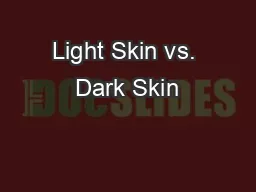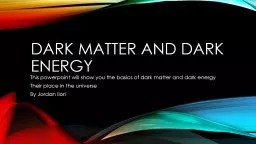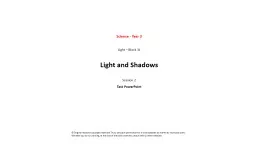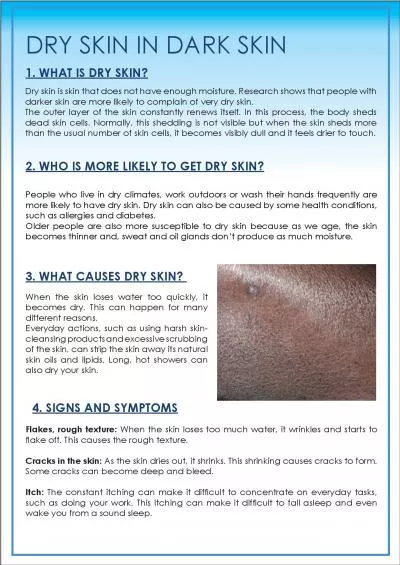PPT-Light Skin vs. Dark Skin
Author : conchita-marotz | Published Date : 2016-03-14
Alyssa Thomas Topic Race Methodology Q ualitative study consisting of purely interviews I interviewed 5 people from different cultural experiences and social backgrounds
Presentation Embed Code
Download Presentation
Download Presentation The PPT/PDF document "Light Skin vs. Dark Skin" is the property of its rightful owner. Permission is granted to download and print the materials on this website for personal, non-commercial use only, and to display it on your personal computer provided you do not modify the materials and that you retain all copyright notices contained in the materials. By downloading content from our website, you accept the terms of this agreement.
Light Skin vs. Dark Skin: Transcript
Download Rules Of Document
"Light Skin vs. Dark Skin"The content belongs to its owner. You may download and print it for personal use, without modification, and keep all copyright notices. By downloading, you agree to these terms.
Related Documents














